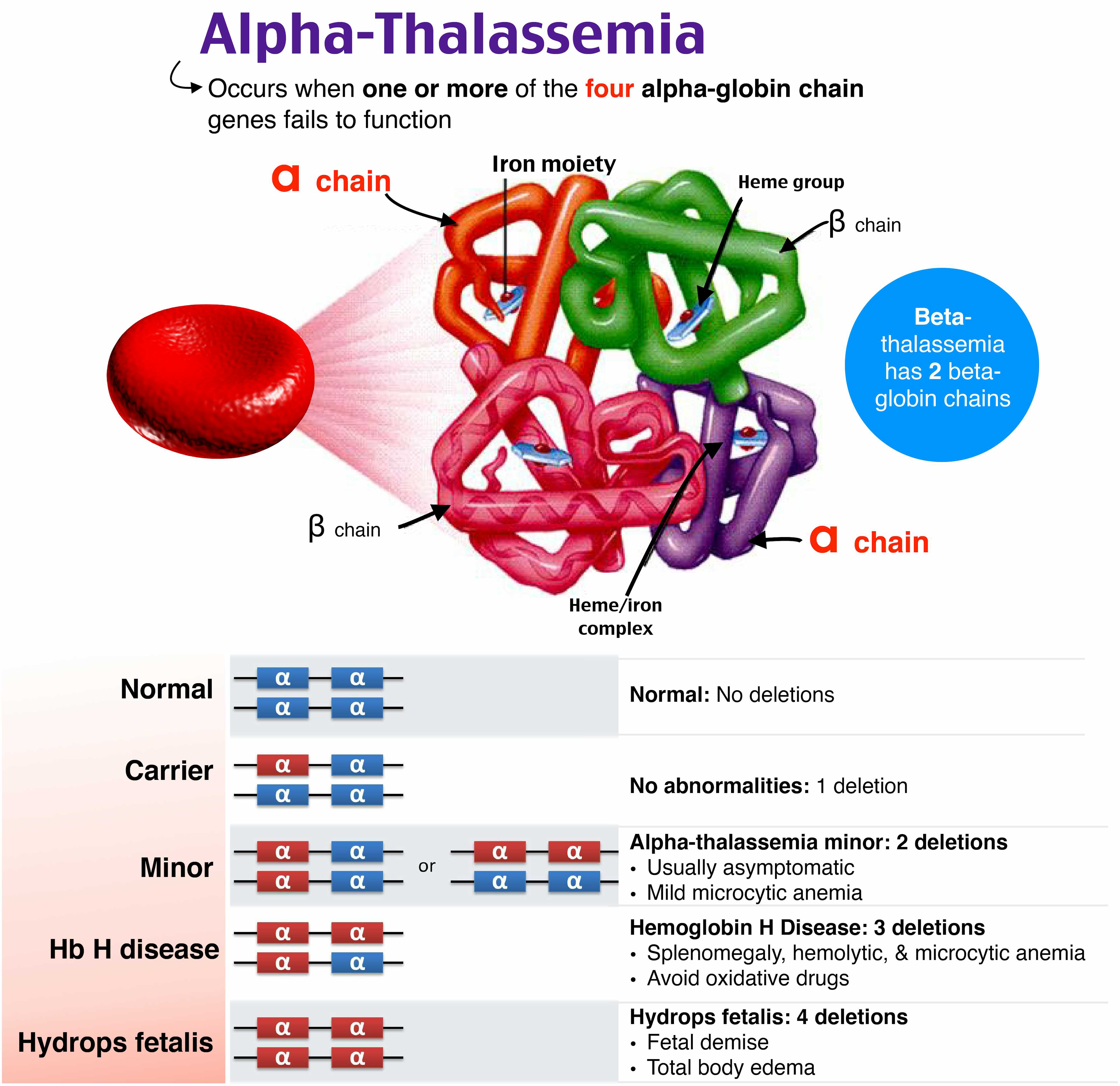D is the correct answer
Explanation:
Adult hemoglobin consists of two pairs of globin polypeptide chains: one pair of alpha and one pair of non-alpha chains, each of which has an attached heme molecule. Alpha-thalassemia is caused by a deletion of two or more copies of the four alpha-globin genes. Women with deletions of both alpha-globin genes on one chromosome (αα/--) are at risk of having a fetus with alpha-thalassemia major, while the absence of alpha-globin genes (--/--) is associated with hydrops fetalis, intrauterine death, and preeclampsia.

Deletion of one alpha-globin gene (α-/αα) (C) is an asymptomatic condition and clinically unrecognizable from the normal genotype. Deletion of two globin genes, alpha-thalassemia minor, causes mild microcytic anemia and is common among individuals of Southeast Asian, African, and West Indian descent. In individuals of African descent, alpha-thalassemia minor is usually due to a deletion of a single alpha-globin gene on each chromosome (α-/α-) (B), which rarely results in fetuses affected by alpha-thalassemia major. This is in contrast to the common Asian genotype (αα/--). Deletion of three alpha-globin genes (α-/--) (A), hemoglobin H disease, is associated with more severe microcytic and hemolytic anemia and can also result in a fetus with alpha-thalassemia major.
P.S. Want to test your knowledge with more questions like this? Take advantage of 20% off the Rosh Review CREOG Qbank and get access to 2,000 CREOG-formatted questions with detailed explanations and images!

